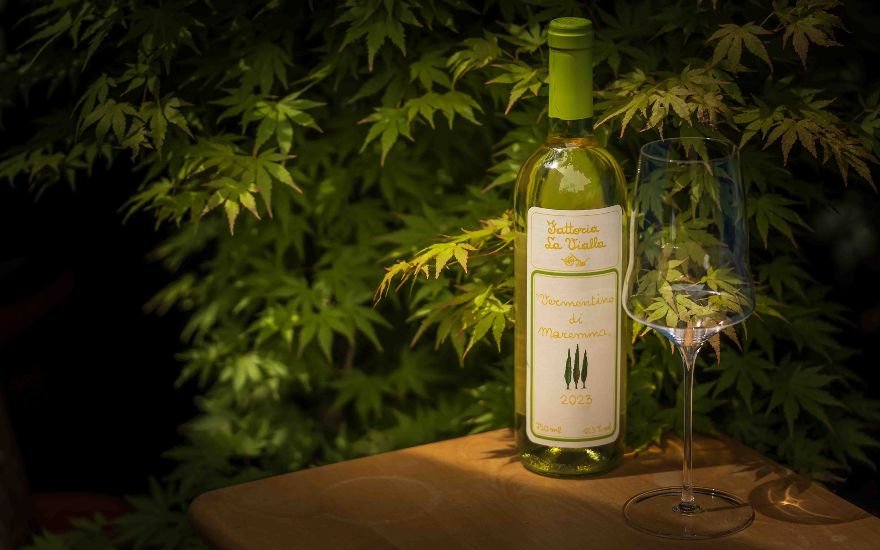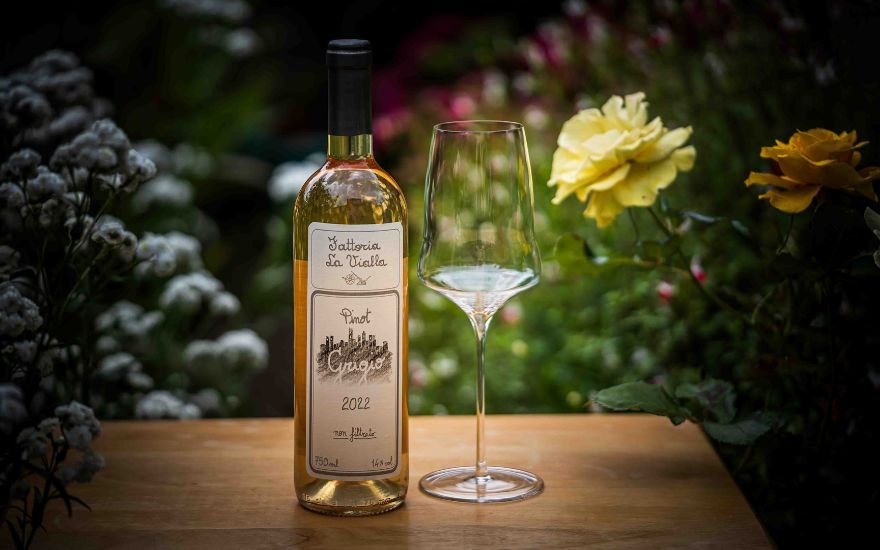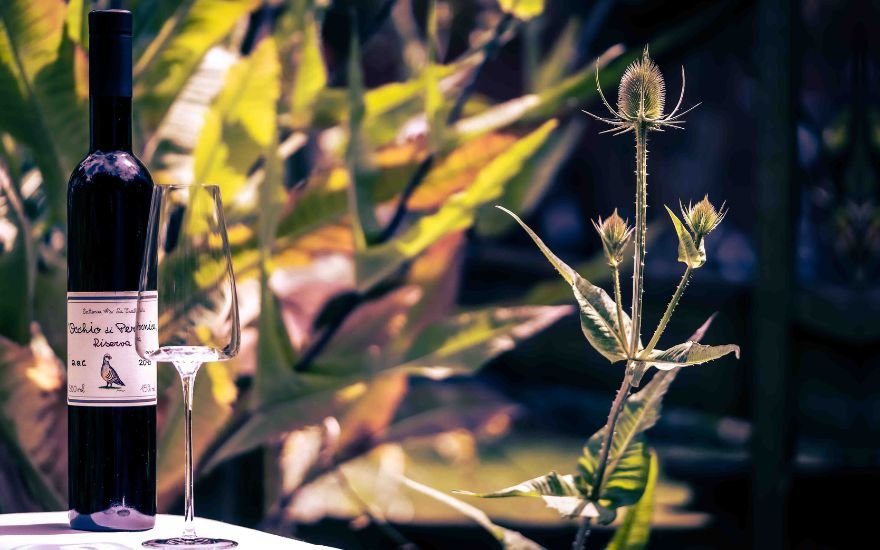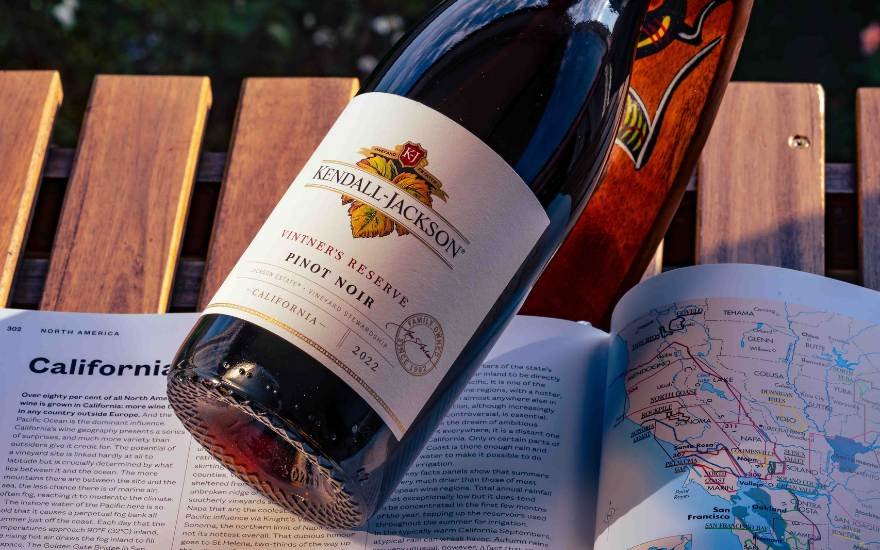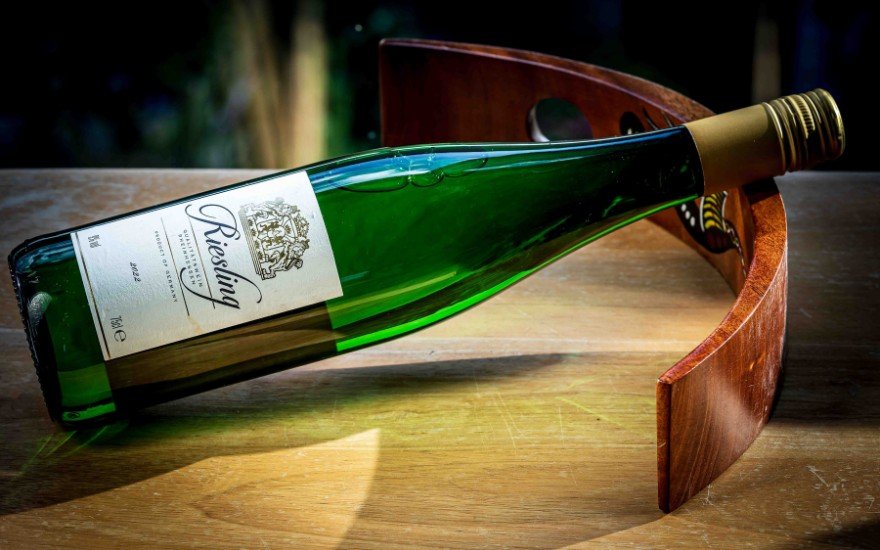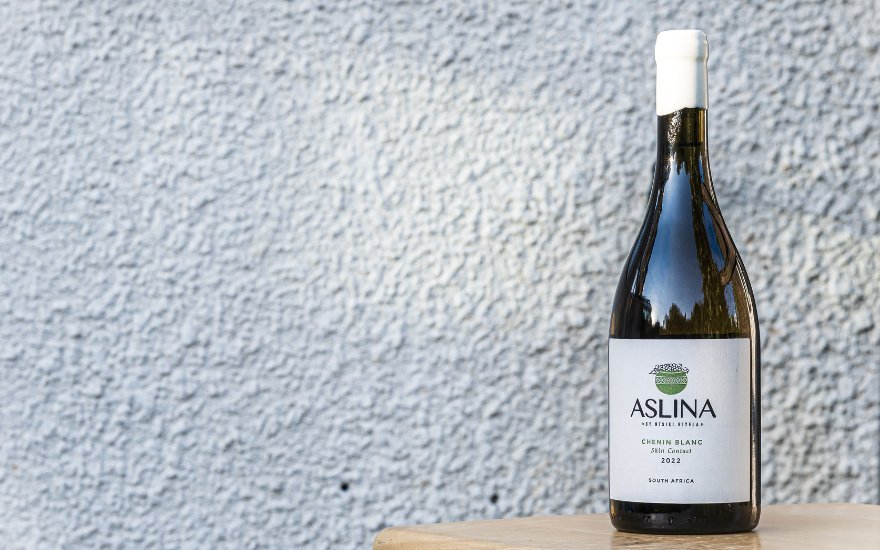Photo credit: Wines of Greece
Unless you are in the Southern Hemisphere or anywhere near the Equator, summer feels like a distant memory. It’s easy to dream of the shimmering blue skies and seas; boats and whitewashed buildings with blue shutters - colours of the Greek flag. That bright light and gentle warmth just lifts your spirits.
Wine is sacred and philosophical to the Greeks. So much so that the ancient Greeks worshipped the god of wine, Dionysus (the Romans called him Bacchus), one of twelve major Greek deities and he even named his twins Staphylos (grape) and Oenopionas (winemaker).
“In Greece there is an old saying which, roughly translated, says, ‘if you have a piece of land where you can grow something, anything, grow it. If nothing can grow on your land, then plant a vineyard or olive grove.’ These two forms of agriculture have minimal nutrient requirements and excel in places that induce reasonable stresses. Necessity exiled Greek vineyards to the most interesting terroirs.”
~ Konstantinos Lazarakis MW: “The Wines of Greece”
Modern Greek winemaking and savvy international marketing is however, a relatively recent phenomenon after centuries of political turmoil and wars. Slowly and steadily, there has been a rebirth in Greek viticulture and winemaking; with the rise of inward investments and boutique wineries that aspire to compete with the best in the world, not just in Greece. Instead of bargain booze driven by volume, the focus has been shifting towards premium wines for fine dining. Necessity is the mother of reinvention. The 2010 financial crisis pushed Greek producers to collaborate at home and worldwide in promoting wine tourism and export drives.
Even if you had no plans for a winter break in sunny Greece, our brief Greek wine odyssey below takes you around this fascinating country from Macedonia in the north, through Central Greece and the huge Peloponnese peninsula to island hopping between Evia, Crete, Santorini and even Samos close to the Turkish coast in the east. With each region, we explore the subtle and critical differences between their micro-climate and terroir. Through the wines listed, we go behind their labels to explore the history of the wineries and the visions of their winemakers.
Although international grapes such as Chardonnay, Sauvignon Blanc, Cabernet Sauvignon, Merlot and Syrah are widely planted, Greece boasts over 300 indigenous grape varieties that are enjoying a renaissance with the wine trade and consumers alike. So sit back and enjoy as we explore native Greek grapes from Assyrtiko to Xinomavro and beyond!
MACEDONIA
Photo credit: Wines of Greece
The northern part of Greece is graced with magnificent mountains like the snow-capped Olympus, which Homer described in the ‘Odyssey’ as basking in ‘pure upper air’. Besides thick forests with deep gorges and cascading waterfalls, you will also find tranquil lakes. Go slow and enjoy random encounters.
Place: Naoussa
An hour’s drive west of the city Thessaloniki between the Pindus Mountains and the Macedonian Plains lies Naoussa, nicknamed the Napa Valley of Greece. Full-bodied red wine production dominates here and the most important grape is the Big Red of Greece: Xinomavro - which literally means ‘tart black’ for its tang and dark colour. Its tannic structure is best compared with Barolo and Nebbiolo from Piedmont in Italy; but styles are changing.
Wine: Thymiopoulos Xinomavro 2021, Naoussa
Photo credit Will Wong
Apostolos Thymiopoulos has become the ambassador for Greece’s new wines and winemakers. Through his transformation of Xinomavro, Thymiopoulos has propelled the hitherto relatively obscure region of Naoussa and its formerly unloved grape variety to success in global markets.
After studying oenology at university, he opened a wine shop in Thessaloniki that gave him access to other wines from Greece and beyond. Following the death of his father and brother in quick succession, Thymiopoulos had to take over the family winery. It lies in the foothills of the scenic Mount Vermio, outside his home village of Trilofos - close to Aristotle’s school in Mieza, where the philosopher is said to have taught Alexander the Great.
Practising organic and biodynamic farming, key problems in the vineyard are wild boars, greedy birds and, very occasionally, locusts. He was the first in his family to bottle the wine from their grapes; instead of selling them on. Honing his craft through respecting the terroir, and travelling widely, Thymiopoulos has devised a style of Xinomavro that appeals to drinkers who prefer their reds softer and accessible at a young age such as the above.
Despite its pale ruby appearance, this red is full of surprises. With a raspberry nose, it is light and totally quaffable with high acidity like Sangiovese (Chianti), making it versatile with tomato-based dishes, roast chicken or pork. It has a very delicate structure with silky tannins, making it the perfect introduction to Xinomavro and Greek reds.
Size: 750ml
ABV: 13%
Find here: £15.99 or £13.99 Mix Six, Majestic
Place: Pella
A fertile plain in the northwest of Thessaloniki, most vineyards are located on the slopes of the surrounding mountains.
Wine: Ktima Ligas IGP Pella "Assyrtiko Barrique” 2020
Photo credit: Will Wong
Following his oenology degree in Montpelier, Thomas Ligas gained considerable experience with Tsantali and the Naoussa Co-op before setting up his own winery in 1985. Later, his children Melisanthi and Jason (a vocal advocate of natural wines) became involved.
Thomas together with his daughter Meli, are constantly experimenting with new techniques based on mild natural vinification. Their philosophy can be summarised as follows: permaculture, zero interventions in wine, no sulphites or commercial yeasts. In their experiments of fermenting different wines in barrels, Thomas tasted three whites, and began comparing the characters of the wines to famous women in Greek culture. And the concept was born…this label features Maria Callas, a famous soprano from Greece who became a global diva. Assyrtiko is often associated with Santorini in the south, but has been wonderfully developed in the North.
Deep gold in the glass that looks nothing like the pale Assyrtiko you may have tried. Its nose is oxidative like an Amontillado sherry. Very intense and rounded on the palate with a long finish. Its minerality is subdued without the racy acidity of our Santorini Assyrtiko below. Serve between 10-12°C as a gastro wine to be sipped slowly. When it warms up, a sweetness emerges. Pairs well with Paprika Pork or Hungarian Goulash and fresh greens. Roast chicken or BBQ fish with hot sauce would work wonders.
This Assyrtiko Barrique is fermented with indigenous yeasts and matures in old, large, oak barrels for 8-12 months. It is bottled unfiltered with a strictly limited edition of just 2000 bottles.
Size: 750ml
ABV: 13.5%
Find here: £45 Dynamic Vines
THESSALY
Easily the largest single fertile plain in Greece south of Macedonia, grain and cotton plantations have been the bedrock even before the Ottoman Empire sought to control and exploit this district. Vineyards tend to be on the periphery and up the mountain slopes.
Place: Tyrnavos
Besides high-yielding vines to supply the table wine trade, Tyrnavos is renowned for its Tsipouro, used in the production of grape distillates.
Wine: Ktima Zafeirakis Malagousia 2023
Photo Credit: Will Wong
Italian-trained Christos Zafeirakis is fourth-generation of this vine-growing family in the Tyrnavos region for over a century; but the first to establish a commercial winery in 2005. Since then, his brand has seen a meteoric rise to the upper echelons of Greek wines.
Certified organic, this revitalised aromatic grape is fermented with indigenous yeasts in large oak barrels. Lush citrus and tropical fruits on the nose; but steely and full-bodied with high acidity when you sip. There is a waxy texture with intense salinity and a flinty long finish. Pair with seafood. Often drunk young and fresh, great Malagousia develop in complexity even after a decade in the bottle.
Size: 750ml
ABV: 13%
Find here: £14.99 Waitrose Cellar
Place: Karditsa
Further southwest inland, more than half of Karditsa is on high mountain terrain. Unlike many other parts of Greece, plenty of small rivers and creeks flow down north-facing slopes.
Wine: Monsieur Nicholas Winery Moi, Je M’en Fous! Limnionas Dry Red
Photo credit: Will Wong
The very first quote above is on the back label. Giorgos Karamitros established his venture in 2000, breathing new life into the Messenikolas Protected Designation of Origin (PDO).
Limniona might be Greece’s equivalent of the Spanish variety Mencia. With its fruit-forward aroma and dense colour, high levels of rich but not astringent tannins, Limniona is fast becoming a triumph for indigenous Greek varietals. Incidentally, it was Christos Zafeirakis who started planting this forgotten and rediscovered grape in 2000.
The Limnionas variety grows in the foothills of the Agrafa Mountains in high-altitude vineyards. It gives a lower yield per hectare, but is enriched by the microclimate created in the region by Lake Plastiras.
A fresh wine with a unique and slightly sweet but dynamic flavour, rich in aromas, with a bright red colour. Aromas of mulberries, wild raspberry, strawberry and flowers with a hint of pepper create a wine that is best consumed fresh, at its most vigorous. Ideally paired with red meat or poultry dishes with spicy red sauces.
Size: 750ml
ABV: 13%
Find here: £22.30 Grecian Artisan Wines
CENTRAL GREECE
Photo credit: Wines of Greece
As the country’s largest region, it is known as Sterea Ellada which means ‘solid’ Greece. Attica is also the most populous prefecture, with the capital Athens on its southeastern tip. In Meteora northwest of Athens, you will be awed by some of the most revered monasteries such as the Moni Megalou Meteourou perched atop the highest rock since 1340.
Place: Viotia
Just north of Attica, the climate here can be as dry but significantly cooler up high altitudes. At the Helicon Mountain in Boeotia almost halfway between the ancient site of Delphi and Athens lies a Kontoura white vineyard. This indigenous Greek white grape (a clone of Savatiano) is only found in the 9 Muses Valley of the Ascre region.
It was replanted in 1962 by his grandfather Spyros and great-grandfather Dimitrios on the south-east slopes of up to 550m above sea level. Today, current owner and former pharmacist turned winemaker Panos Samartzis carries on the family tradition in experimenting with the two signature Muses Valley grapes - Kontoura white and the black Mouhtaro. These are only found here in Greece and nowhere else in the world.
Wine: Samartzis 'Dío Potámia' (Two Rivers) Kontoura, Barrique, Thiva 2020
Photo credit: Will Wong
Limited production of 2000 bottles a year, this premium Kontoura was aged in new French oak barrels for 4-6 months, followed by 6-8 months in bottle before release. Only the finest vintages are produced and this is probably one of the best expressions of Savatiano in Greece.
Its nose is reminiscent of a refined German Riesling without the residual sugar or green apple undertones. Mineral and saline with restrained intensity and a herbal long finish. A very versatile gastro wine on par with the finest Chardonnay. One of a kind. A true gift from the Muses Valley to the world.
Size: 750ml
ABV: 12.5%
Find here: £21.50 Grecian Artisan Wines
Wine: Samartzis Mouhtaro Grand Reserve 2021
Photo Credit: Will Wong
Unique to the Muses Valley, the Mouhtaro grape has aromatic intense black fruit with fresh acidity and spice. Handcrafted and maturated in French oak barrels for 12 months and 12 months in bottles with minimal sulphites this wine has violet with herbal notes. Its very silky tannins make this limited edition unfiltered wine (only 3000 bottles produced) so drinkable now. Decanting would reveal its changing flavours with airing. You can even double decant before sealing the remaining wine for another night. It could evolve into something different from the first impression. More liquorish after 5-7 years if you have the patience. Pairs perfectly with red meat and hearty roast vegetables or winter stews.
Size: 750ml
ABV: 14.5%
Find here: £49.50 or £133.66 for a case of 3 Grecian Artisan Wines
Place: Evia
East to Central Greece lies this second largest island to Crete, where you could explore the famous four mountainous Sporades (which means scattered ones). Dense vegetation surrounded by azure seas morph into small vineyards, hilltop monasteries and sky-reaching peaks.
Wine: Vriniotis Winery Gialtra Retsina NV
Photo credit: Will Wong
The family owned winery and vineyard are located in Gialtra, a small village in northern Evia, 14 km from Aidipsos. Konstantinos Vriniotis, a soft-spoken man, has practically put Evia onto the map of quality Greek wine.
For over twenty-four centuries, Aleppo pine resin has been added to base wines in maintaining freshness and stability. Thus, retsina became the national wine of Greece with some inferior ones giving Greek wine a bad name. Not any more.
Voted as one of the 50 Great Greek Wines in 2023, this Retsina infused Roditis does not resemble retsina as you might recall or expect. Grown on volcanic soil, it has herbaceous aromas of coniferous forest and mastic trees. The palate is dry with balanced acidity and salinity, given the vineyard’s proximity to the Aegean Sea. Pairs well with moussaka and steamed green beans. Try with fennel-based lamb dishes. Raw oysters would be the perfect dance partner.
Size: 750ml
ABV: 12.6%
Find here: £18.90 Grecian Artisan Wine
PELOPONNESE
Photo credit: Wines of Greece
With its breathtaking array of landscapes, villages and ruins, this is home to Olympia, birthplace of the Olympic Games. Two of Greece’s most memorable towns grace its shores: Venetian-style Nafplio and romantic Monemvasia.
Place: Nemea
The landscape here is reminiscent of Tuscany in Italy. Its climate and soil favours the great black Greek grape Agiorgitiko to thrive and produce a wide range of excellent reds and rosés.
Every September since 2004, the Great Days of Nemea wine festival invites the world to this key wine producing region of 17 villages, when wineries open for tours, tastings, food pairing seminars, concerts and other wine-related events. The Nemea wine trail with over 9800 acres of wineries and vineyards is well worth exploring.
Wine: Ktima Driopi Reserve Agiorgitiko 2018
Photo Credit: Will Wong
The winemaker Yiannis Tselepos, with 30 years of experience in the Peloponnese showcases the Agiorgitiko variety for his red wines; amongst the best in PDO Nemea.
Best decanted at least an hour ahead of serving, this complex wine has red fruit aromas, eucalyptus and herbaceous notes. Medium-bodied with silky ripe tannins that work a treat with steak or hearty winter stews. It can be cellared for 5-10 years.
Size: 750ml
ABV: 14.5%
Find here: £25.50 Cava Spiliadis
CRETE
Photo credit: Wines of Greece
Take time to explore the sheer variety and beauty of its mountain villages on the largest Greek island, each with their own cuisine and culture. Follow a gourmet trail with distinctive herbs, cheeses and honey.
Crete accounts for 20% of all Greek wine production. Almost in the middle of this vast island’s north coast is Iraklio Wine Country with a dozen wineries producing some 70% of Crete’s wines, with most clustering around Arhanes, Peza and Dafnes. The mountains that separate the north from the south provide cooling effects on the vineyards.
Wine: Lyrarakis Estate Orange Wine 2023
Photo credit: Will Wong
Brothers Manolis and Sotiris Lyrarakis first established the winery on the island of Crete in 1966. Today, the historic and premium winery is run by second-generation winemakers, supported by an extended family of skilled professionals.
No oranges are used or harmed here. With skin contact of 50:50 Assyrtiko and Vidiano blend, Spanish winemaker Myriam Ambuzer who has been with Lyrarakis for over 20 years created a rather magical and easy drinking gastro wine that does not pretend to be hip or funky. No oak but five months in concrete tanks gives this little gem a kumquat nose with structured tannins. Its fresh and crisp finish matches scrumptiously with Parmagiano and Gruyère baked spaghetti squash. A treat with roasted pumpkin seeds.
Size: 750ml
ABV: 13%
Find here: £13.99 or £11.99 Mix Six Majestic
Wine: Lyrarakis Estate Liatiko 2023
You may not have tried Liatiko, a native grape from Crete. Think Beaujolais (Gamay) or Pinot Noir. It has a vibrant nose with red cherries. The high acidity with soft but structured tannins makes it a great gastro wine with tomato-based pasta and pizza. Roast chicken or pork would love it too.
Size: 750ml
ABV: 13.5%
Find here: £13.99 or £11.99 Mix Six Majestic
SANTORINI
Photo Credit: Wines of Greece
Now the cruise ship day-trippers are gone till next summer, this is the best time to see this picturesque island in a new light. People travel from all over the world to be here, and even applaud the sunset. Blessed with a dry volcanic microclimate, the vines in Santorini are also Europe’s oldest, impervious to the phylloxera bug that wiped out most of Europe’s vines in the late 19th century.
Water is scarce with almost zero rainfall during the summer. Here, you see grapes grown close to the ground, in a kouloura (basket nest) to retain moisture and protect the grapes from fierce winds, which in turn inhibit the spread of fungal diseases. This form of viticulture is however very labour intensive and time-consuming.
Although the famous Assyrtiko grape is grown across the Cyclades, Santorini is mostly associated with this noble native varietal with relatively low yields, making its wines sought after worldwide with prices to match.
Wine: Sigalas Santorini Assyrtiko 2022
Photo credit: Will Wong
Located in the plain of Oia, the winery was founded in 1991 by former mathematician who became a world-class producer. Paris Sigalas is hailed as a visionary for the meteoric rise of Santorini wines to international stardom.
Pale lemon in the glass, think Chablis Grand Cru from 60 year-old vines. Bracing acidity with high minerality makes this fine wine a perfect companion with raw oysters, seafood and white fish. The simpler the dish, the better. It is still youthful and would benefit from 3-5 years of cellaring. The 2022 vintage of Assyrtiko from Santorini is more successful than 2023 or 2024. So get some and keep if you can find any.
Size: 750ml
ABV: 14.5%
Find here: £32.38 Decántalo
SAMOS
Photo credit: Wines of Greece
Wander through woods and swim under waterfalls here. The island’s capital Vathy (also called Samos) is blessed with a deep bay, and its waterfront lined with bars, cafes and restaurants. Opposite the ferry quay lies one of Samos’ best vintners, the Museum of Samos Wines offering winery tours and tastings.
On our last stop, we savour the nectar consumed by the Olympian gods made from the naturally sweet Samian Muscat grape. It was celebrated by Lord Byron and included in the rations of Greek fighters during the War of Independence.
Wine: Samos Nectar 2016
Photo credit: Will Wong
Made with overripe, sun-dried white small-berried Muscat grapes, it ages for 6 years in oak barrels. Deep amber in colour, it is lush with beautiful orange hints, and a nose of raisins, dried fruits, honey and dried nuts. Balanced acidity with toffee, raisins, walnuts, mature oranges, and cloves. Richer than most Sauternes with exceptional value. Perfect with Christmas Pudding, or strong cheeses such as Stilton. Serve at 12-14ºC.
Size: 500ml
ABV: 14%
Find here: £23.50 Yorkshire Vintners
Before we go …
We hope the above twelve very different styles of Greek wines offer you a glimpse into the wide range of remarkable quality artisan produce, from this ancient country of proud and passionate people. There is no better way to remember, or reacquaint with the Hellenic hinterland and isles.
Do the wines remind you of an unforgettable holiday, where you fell in love, proposed or even spent your honeymoon? Some might even transport you to a realm and time you are yet to discover. Yamas!
“For the Greeks, the worst thing in the world is to be alone, so someone always comes to talk to me, to ask me or tell me something … They invite me to their homes, to panegyris, even to baptisms. I have never encountered such hospitality. I am a total stranger, but they treat me like a long-lost friend.”
~ Victoria Hislop: “Cartes Postales from Greece”
Further Reading
The Wines of Greece by Konstantinos Lazarakis MW is comprehensive and authoritative resource if you want to know much more. It has a scholarly feel but is accessible to wine enthusiasts, and indispensable to wine geeks and MW candidates alike.
By Will Wong
To see more of Will’s articles, make sure you click here!
































